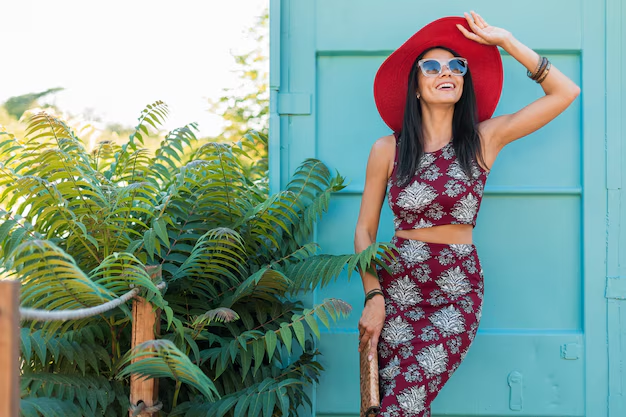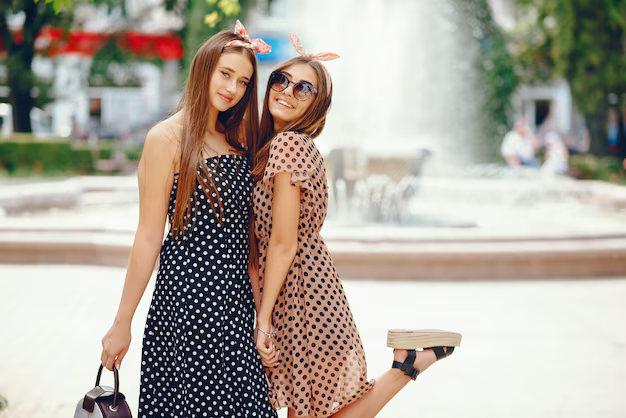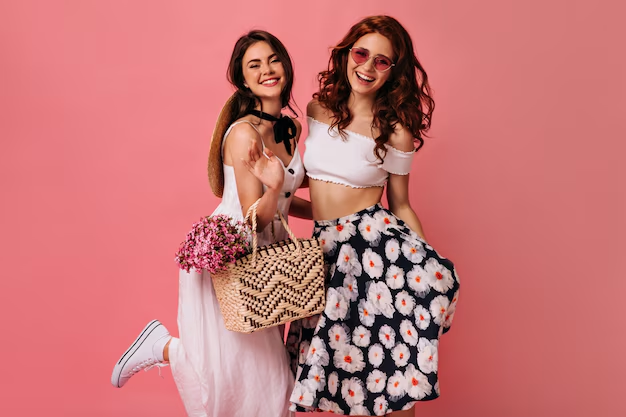As we move further into the 2020s, fashion continues to evolve in exciting and unexpected ways. With the global landscape rapidly changing due to technological advances, cultural shifts, and growing environmental concerns, fashion in 2025 is shaping up to be more inclusive, sustainable, and innovative than ever before. Designers are pushing the boundaries of creativity, while consumers are demanding more transparency and responsibility from the industry. If you’re curious about the future of fashion, here are the top trends to watch in 2025.
1. Sustainability as a Standard
Sustainability is no longer a trend but a necessity. In 2025, eco-friendly fashion practices will be deeply ingrained into the fabric of the industry. From circular fashion models to the use of biodegradable materials, sustainability will be at the forefront of design and production. Brands will focus on using low-impact, sustainable materials like recycled fibers, plant-based fabrics, and even lab-grown textiles. Expect to see fashion houses embracing slow fashion principles, prioritizing quality over quantity, and offering consumers products designed for longevity rather than short-term wear.
2. Tech-Enhanced Fashion
Technology continues to play an increasingly significant role in fashion, and by 2025, we’ll see even more tech-infused clothing. Smart textiles, which respond to environmental changes like temperature and moisture, are set to become mainstream. These garments can regulate body temperature, change color, or even charge electronic devices. 3D-printed clothing, which allows for highly customizable and waste-free designs, will also be more prevalent. Moreover, augmented reality (AR) and virtual reality (VR) will allow consumers to virtually try on clothes before making a purchase, offering a more personalized shopping experience.
3. Gender Fluidity and Inclusivity
Fashion is continuing to move away from rigid gender norms. In 2025, we’ll see even more gender-neutral and unisex clothing dominating the scene. Designers will embrace fluidity in their collections, blurring the lines between traditionally masculine and feminine styles. Expect to see more diverse models on the runway, including those of different body sizes, ages, and ethnicities. This inclusivity reflects a broader societal shift towards acceptance and representation, and the fashion industry is evolving to mirror these changes.
4. Vintage Revival
As a counter to fast fashion’s unsustainable practices, the resurgence of vintage and secondhand clothing will continue to grow in 2025. Consumers are increasingly drawn to unique, one-of-a-kind pieces from past decades, offering both sustainability and a sense of nostalgia. Thrift shopping will become even more mainstream, with brands and designers embracing vintage-inspired collections and upcycled materials. The rise of vintage fashion also aligns with the growing consumer demand for environmentally friendly options, as it reduces waste and promotes a circular economy.
5. Bold Colors and Maximalism
After years of minimalist designs dominating the fashion landscape, maximalism is making a comeback. In 2025, bold colors, intricate patterns, and eclectic styles will be the dominant aesthetic. Expect to see eye-catching color palettes that mix and match unexpected hues—think neon accents alongside rich earth tones, or psychedelic patterns alongside sleek metallics. This trend reflects a desire for individuality and self-expression, as people seek to break free from the constraints of minimalist fashion and embrace vibrant, dynamic styles.
6. Tech-Driven Customization
Personalization will take a huge leap forward in 2025. Thanks to advancements in technology, consumers will be able to design custom pieces or tailor existing garments to their preferences with greater ease. Through platforms offering AI-driven style suggestions, 3D body scans, and custom fabric choices, fashion will become more personal than ever. This trend reflects a larger societal movement towards unique, individualized expression, as people seek to wear what truly resonates with their identity.
7. Fashionable Functionality
The demand for versatile, multifunctional clothing will skyrocket in 2025. With busy, fast-paced lifestyles, people want clothing that is both stylish and practical. This means more garments that can transition seamlessly from day to night, adapt to different weather conditions, or serve multiple purposes. Expect to see fashion-forward yet functional pieces, such as waterproof jackets with built-in tech features, dresses that double as office wear and evening attire, and shoes designed for both comfort and style.
8. Biophilic Design and Nature-Inspired Fashion
As sustainability continues to take center stage, the connection between fashion and nature will become even more pronounced. Biophilic design, which incorporates elements of nature into products, will influence clothing in 2025. Think prints inspired by botanical patterns, textures that mimic natural materials, and designs that celebrate organic shapes. This trend reflects a growing desire for harmony between the natural world and human-made creations, aligning with the wider environmental movement.
9. Circular Fashion and Clothing Rental
In line with the sustainability movement, circular fashion will continue to gain traction. Brands will increasingly adopt take-back programs, where consumers can return their worn-out clothes to be recycled or repurposed. The rise of clothing rental services will also play a major role in reducing the environmental footprint of fashion. Renting high-quality, designer pieces for special occasions or everyday wear will become the norm, offering a more sustainable alternative to fast fashion while still providing access to a diverse range of styles.
10. Fashion Meets Health and Wellness
The growing interest in health and wellness will begin to influence fashion more deeply. Clothing will be designed not only for aesthetics but also for physical well-being. Expect to see garments with built-in support for posture, skin-care fabrics that release beneficial substances, and activewear that incorporates smart textiles to monitor your health and performance. The line between fashion, fitness, and wellness will blur as designers create clothes that serve a dual function: both stylish and beneficial for mental and physical health.
Frequently Asked Questions
- What will be the biggest fashion trend in 2025? Sustainability and tech-infused fashion are expected to dominate, with a focus on eco-friendly materials and clothing that incorporates smart technology.
- How will fashion technology change in 2025? Advances in smart textiles, 3D-printed clothing, and virtual try-ons will revolutionize the fashion industry by enhancing personalization, reducing waste, and improving functionality.
- Is vintage fashion going to be popular in 2025? Yes! Vintage and secondhand clothing will continue to be popular, offering unique pieces while supporting more sustainable fashion choices.
- What is the role of gender fluidity in fashion? In 2025, more brands will embrace gender-neutral and unisex clothing, reflecting a cultural shift towards inclusivity and breaking traditional gender boundaries in fashion.
- How will fashion become more sustainable? By using eco-friendly materials, adopting circular fashion models, and emphasizing quality over quantity, sustainable practices will be a major trend in the industry.
- What is maximalism in fashion? Maximalism refers to bold colors, extravagant patterns, and an eclectic mix of styles. It contrasts with minimalist fashion and promotes individuality and self-expression.
- How will personalized fashion change in 2025? Personalized fashion will see a huge boost through AI-driven style recommendations, body scans, and customizable clothing, giving consumers greater control over their wardrobe choices.
Conclusion
The future of fashion is shaping up to be diverse, inclusive, and sustainable, with exciting technological innovations and a renewed focus on individuality. From smart fabrics to vintage-inspired collections, 2025 promises to be a year of transformation in the fashion industry. As consumers continue to demand more from brands—whether it’s sustainability, inclusivity, or functionality—the industry will have no choice but to innovate and adapt to meet these evolving expectations.
Key Takeaway
Fashion in 2025 will be defined by sustainability, innovation, and inclusivity. With advancements in technology, the rise of circular fashion, and a focus on individuality, the industry is evolving to meet the demands of the modern consumer, ensuring a stylish yet responsible future for fashion.




